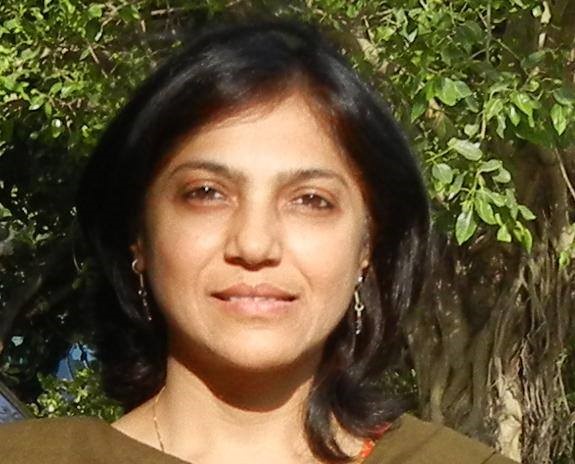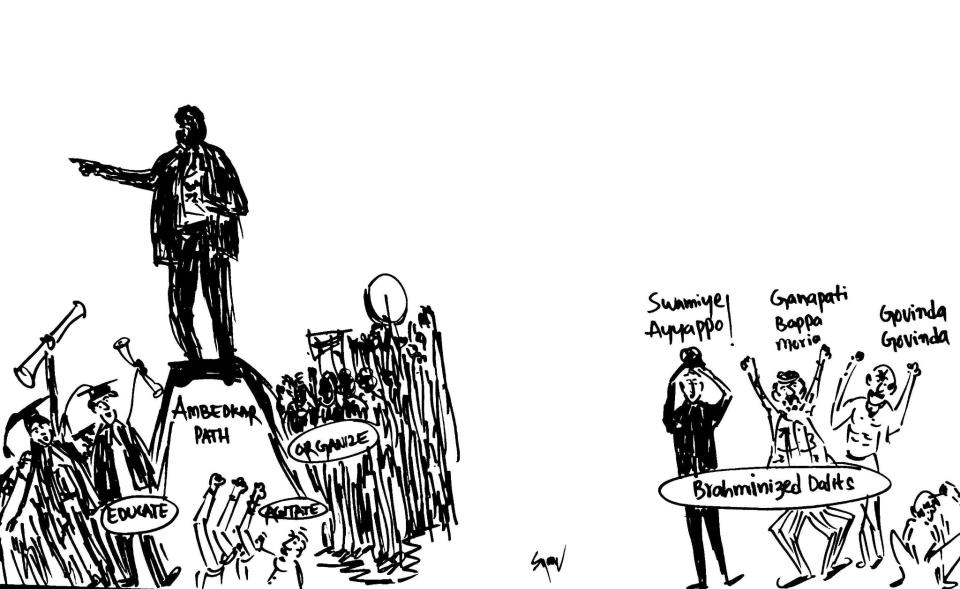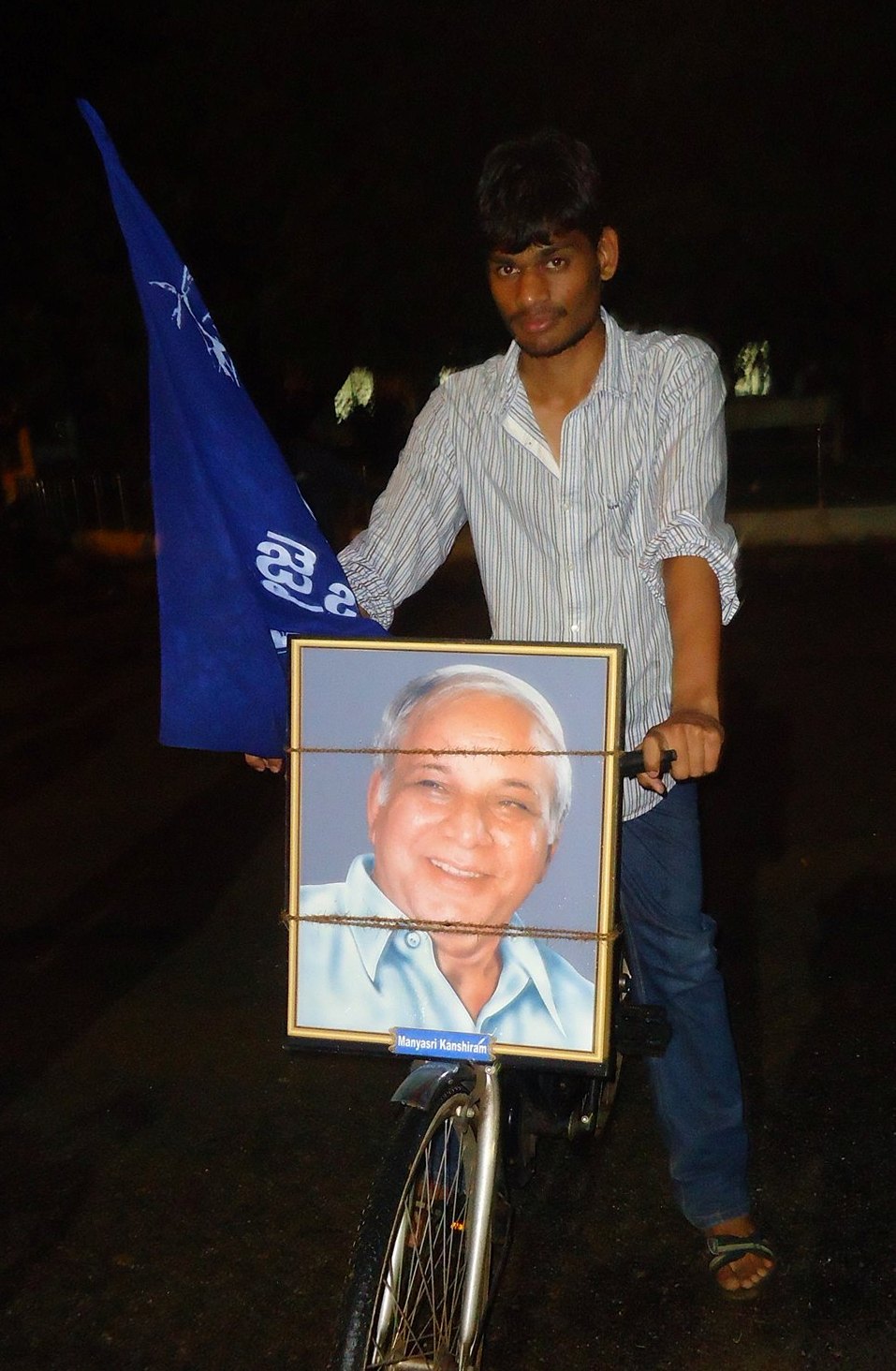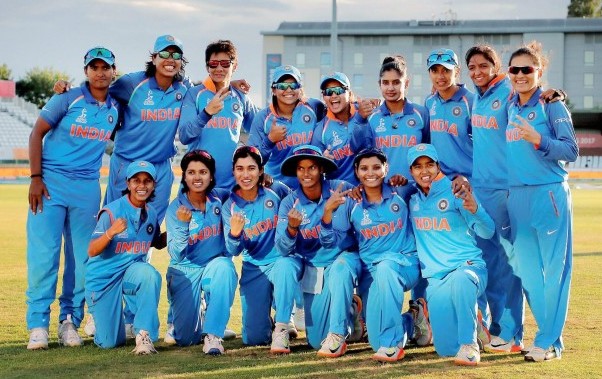Naaz Khair
 Muslim population (172 million) is the second largest in the Country, followed by Christian (27 million) and Sikh (20 million) populations (see Table 1).
Muslim population (172 million) is the second largest in the Country, followed by Christian (27 million) and Sikh (20 million) populations (see Table 1).
Muslim literacy rates and levels of education from the latest census (Census 2011) have been analyzed to present the status of Muslim education in this article.
While Jains have the highest literacy rate (94.9%) with the least gender gap (difference between its male and female literacy rates is 3.9%), Muslims have the lowest literacy rate (68.5%) with the gender gap in its literacy rate almost three times (12.7 %) that of the Jains. Among major religions, only Muslim literacy rate is below the national average (73.3%). (see Table 2)
Muslim literacy rate when disaggregated by states and union territories presents a picture of wide inter-state/UT variations (see the map below). Kerala has the highest Muslim literacy rate (93%) and Haryana the lowest (53%). There is, thus, a huge difference (of 40 points) between the top and the bottom state. The map marks states and union territories that have Muslim literacy rate greater than the corresponding state/union territory average.
Table 1

These states and union territories are Tamil Nadu (SLR -80%, MLR -88%), Karnataka (SLR-75%, MLR-79%), Andhra Pradesh (SLR-67%, MLR-74%), Lakshwadeep (SLR-92%, MLR-92%), Pudducherry (SLR-86%, MLR-92%), Maharashtra (SLR-82%, MLR-84%), Dadra & Nagar Haveli (SLR-76%, MLR-87%), Gujarat (SLR-78%, MLR-81%), Madhya Pradesh (SLR-69%, MLR-75%), Chhatisgarh (SLR-70%, MLR-85%), Odhisa (SLR-73%, MLR-80%), Jharkhand (SLR-66%, MLR-66%) and Arunachal Pradesh (SLR-65%, MLR-68%). Out of the remaining states and union territories, Kerala (SLR- 94% MLR-93%), Goa (SLR-89%, MLR-85%), Daman & Diu (SLR-87%, MLR-86%), Rajasthan (SLR-66%, MLR-63%), Sikkim (SLR-81%, MLR-77%) and Tripura (SLR-87%, 83%) all have Muslim literacy rate that is very close to the corresponding state/union territory average. That leaves fifteen states/union territories, including the entire northern states/union territories, two states in the east and five states in the north-east with Muslim literacy rate ranging from low to very low when compared to their corresponding state/union territory average.
Table 2

These fifteen states/union territories are, Jammu and Kashmir, a Muslim majority state (SLR-67%, MLR-61%), Himachal Pradesh (SLR- 83%, MLR-68.%5), Punjab (SLR-76%, MLR-62%), Haryana (SLR-76%, MLR-53%), Chandigarh (SLR-86%, MLR-75%), Delhi (SLR-86%, MLR-76%), Uttarakhand (SLR-79%, MLR-63%), Uttar Pradesh (68%, MLR-59%), Bihar (SLR-62%, MLR-56%), West Bengal (SLR-76%, MLR-69%), Manipur (SLR-77%, MLR-68%), Assam (SLR-72%, MLR-62%) and Christian majority states of Mizoram (SLR-91%, MLR-78.5%), Nagaland (SLR-80%, MLR-58%) and Meghalaya (SLR-74%, MLR-54%).

Now, if the Muslim population of the Country is 172 million, 106 million live in these fifteen states/ union territories, which have MLR ranging from low to very low. These states/ union territories together hold 62% of the Country’s Muslim population. And, 99 million of the 106 million Muslims live in five states of Jammu and Kashmir, Assam, Bihar, Uttar Pradesh and West Bengal alone.
Research tells us that the process of Literacy begins in the urban areas and trickles down to the rural areas (Krishnan and Shyam, 1987). The rural population in these five states is significant. Together they hold 41% of the Country’s rural population. The state’s rural Muslim population is more than the state’s rural population in at least three of these five states viz. Jammu and Kashmir (SRP -73%, SRMP -74%); West Bengal (SRP-68%, SRMP-78%) and Assam (SRP-86%, SRMP-92%). In the remaining two states, while Bihar has SRP 89% and SRMP 87%, Uttar Pradesh has SRP 78% and SRMP 63%. The high rural Muslim population in these states coupled with low monthly per capita consumption expenditure (MPCE) of Muslims in rural areas (Muslims have the second lowest MPCE in rural India after Scheduled Tribes) account for low Muslim literacy rates in these states, among other factors. Low MPCE translates to the lack of money to invest in children’s education.
The correlation between urbanization and literacy rates with high literacy rate accompanying high urbanization (economic activities such as trade and commerce in the urban areas demand high literacy levels) is seen playing out in the southern states. The southern part of the Country is more developed compared to the rest of the Country and also has high Muslim urbanization. Barring Kerala, Muslim urban population is much higher than the state’s urban population in all the southern states- Tamil Nadu (SUP -48%, SMUP -77%), Andhra Pradesh (SUP-33%, SMUP-65%) and Karnataka (SUP 39%, SMUP-63%). Kerala has SUP-48% and SMUP-52%.
The above correlation between urbanization and literacy rates does not hold true in all cases. In urban areas, Muslims have the lowest MPCE (Monthly Per Capita Consumption Expenditure) in the Country, which means their spending capacity is very low in urban areas. This affects the extent to which urban Muslims, particularly those living in the slums can invest in the education of their children (e.g. Delhi). Delhi is a prosperous state. 97.50% of the population of the state is Urban. The Urban Muslim population of the state is higher at 99%. However, a majority of the Muslim population of Delhi lives in ghettos, slums and a sizeable number of them are migrant laborers. The Muslim literacy rate of Delhi is 76%, the corresponding state average is 86%.
Finally, as in the Table 3 below, if we break down the literates among Muslims by their levels of education and do the same for Scheduled Castes (SC), Scheduled Tribes (ST) and All literates in the Country, what we find is, compared to All literates (see the last column), Muslim, SC and ST literates are cluttered around below primary and primary levels of education i.e. they are predominantly below primary and primary educated. Further, SCs literates have more graduates and above among them compared to Muslim literates.
Table 3

Pasmanda education issues related to affirmative action
What does the term ‘Pasmanda’ mean and who are the Pasmandas? ‘Pasmanda’ is a Persian term and it means, ‘those who have fallen behind’. The anti-caste struggle of low caste Muslims in India is known as the Pasmanda movement. The movement took shape in the 1990s in the backdrop of the Mandal agitation. The anti-caste struggle of Pasmandas or low caste Muslims was also witnessed in the pre-Independence era under the banner of the Momin Conference.
The OBC (Other Backward Castes) and the SC Muslims together comprise the low castes (Pasmandas) among Muslims and are said to have risen from the feet of Brahma and therefore fall in the ‘Shudra’ category as per the age-old Varna system. The Shudras are meant to offer various services to the high castes or those who have risen from the head (Brahmans), arms (Kshatriyas) and thighs (Vaishyas) of Brahma. The shudras performing clean tasks (work of artisans, etc) comprise the OBCs and those performing polluting tasks (manual scavenging, washermen, barbers, etc) comprise the SCs. The Varna system that organizes the castes in a hierarchical order forms the basic structure of Indian society.
Change in religion or occupation/class does not change the caste location of a person and a low caste continues to be under social pressure and oppression, facing discrimination at every level. This experience has been famously expressed by pasmanda leader and parliamentarian Ali Anwar Ansari in his 2007 speech at a Conference when he said, “Hum shuddar hain shuddar; Bharat ke moolnivasi hain. Baad mein musalman hain” (We are Shudras first; we are the indigenous peoples of India. We are Muslims later).
Now coming to question of pasmanda education issues relating to affirmative action, the Constitution of free India adhering to basic democratic principles that define it enjoined affirmative action in the form of reservations in educational institutions for historically repressed low castes. In 1950, in exercise of the powers conferred by clause (1) of article 341 of the Constitution of India, the President made the Order called the Constitution (Scheduled Caste) Order, 1950, which accorded recognition to castes and tribes specified in schedules to this order as Scheduled Castes (these were castes historically involved in unclean/polluting occupations) on whom affirmative action would apply. However, clause 3 of the same order read, ‘no person who professes a religion different from the Hindu religion shall be deemed to be a member of a Scheduled Caste’. This clause was modified in 1956, when Sikh SCs were included and again in 1990 when Buddhist SCs were included. So, effectively, only the Muslim and Christian SCs were left out in violation of the Constitution that disallows discrimination based on religion. In this context, the argument that Islam is an egalitarian religion and therefore does not have caste is not tenable as there is ample proof of caste in Indian Muslim community ever since Islam came to India. Further, the Sachar Committee Report on Social, Economic, and Educational Status of the Muslim Community of India, 2006, also records three divisions of the Indian Muslim community based on caste viz. Ashraf (Upper Castes), Ajlaf (OBC) and Arzal (SC/ST). Further, the question arises that if SCs of two other egalitarian religions, Sikhism and Buddhism can be considered, why not the SCs among Muslims and Christians? Thus, even after 70 years of India’s Independence, there is no affirmative action for SCs among Muslims (along with SC Christians), which has seriously impacted educational development work with them. In fact, virtually no special educational efforts are directed at SC Muslims (including manual scavengers, etc) by any agency governmental or non-governmental.
In 1990, OBC reservations providing for reservations in educational institutions and public employment came into effect forty years after SC/STreservations. Muslims were considered this time (points to official acknowledgement of the existence of caste among Indian Muslims already there!). Arzals (Muslims SCs) were included along with Ajlafs (OBC Muslims). However, in the absence of a caste census, the whole exercise of OBC reservations is not fruitful. The complete list of OBCs across religions does not get drawn up. Serious issues have been raised about many OBCs not listed either in the state or the central OBC list and many of those in the existing state list are missing from the central list and vice-versa. Issues have also been raised about some upper castes that have got into the OBC list through the back door! Caste census is not an unknown category for the people of India. Pre-Independence, during British rule it took place regularly until 1931, in which all religions including Islam and Christianity participated. Therefore, now when the Constitution mandates OBC reservations, caste census must take place.
More reasons for a caste census: P.S. Krishnan retired Secretary, Government of India, in his article in the ‘Frontline’ (volume 29- Issue 04: Feb.25-Mar.09, 2012) explains the ‘thumb rule’ used by Mandal for calculating the OBC population of the Country and estimates the OBC Muslim population of the Country to be 78% (in 2001) after excluding Muslim SC/ST and upper caste populations from the total Muslim population, an estimation quite close to that estimated by the Pasmanda Movement in Bihar and elsewhere, which has always estimated the population of lower caste Muslims to be about 85% of the Muslim population (https://kafila.online/2011/09/02/muslim-quota-keep-it-simple-silly-khalid-anis-ansari). However, data on the educational status of OBC Muslims that is available is based on sample surveys (NSSO), which estimates the OBC Muslim population to be 40.7% and the General Muslim population to be 59.3% (in 2004-05) i.e. it reports the OBC Muslim population to be lower than the General Muslim population!
The Sachar Committee Report and subsequently the post-sachar committee report made use of NSSO data for asserting the relative educational backwardness of OBC Muslims when compared to General Muslims. But there are issues with NSSO data as also mentioned above. For instance, according to it, the percentage of Muslim OBC population in Andhra Pradesh (undivided) in 2004-05 is 19.5%.
But, according to the recent Sudhir Committee Report (Report of the Commission of Inquiry on Socio-Economic and Educational Conditions of Muslims Government of Telangana August 2016), the % OBC Muslim population of Telangana is 81%. The Muslim population of Telangana is 12.68%. The Muslim population of the new state of Andhra Pradesh is 8.53%. If we assume that all of this 8.53% is upper caste, then the OBC population of the divided states together is 40.5% OBC, which is almost double of what has been reported for un-divided Andhra Pradesh in 2004-05 by NSSO! NSSO depends on self-reporting for determining OBC population. Studies have shown that self-reporting causes many low caste Muslims to report themselves as high castes. This brings down the strength of the Muslim OBC population in the Country (Waheed, A & Sheikh I.M: 2017).
Therefore, till such time that the population census continues to gather data for ‘All Muslims’ only while ignoring the OBC Muslims (the fact of OBC Muslims being an official classification notwithstanding), the real picture regarding the educational status of low caste Muslims stands concealed, affecting proper implementation of affirmative action meant for them. In fact, it creates conditions for the educationally developed and educationally deprived to be treated alike. A census reporting on the educational status of All Muslims does not arouse any concern for the need to attend to the special educational issues of low caste Muslims. So, not carrying out a caste census is completely arbitrary and unjust and calls for an immediate resolution of the problem. It is important to settle the question of the size of the OBC Muslim population and other related issues and move on to systematic work with pasmandas, which is long overdue. One hopes that the 2021 census will definitely include a credible caste census.
~
References
• Census of India, 2011
• Sachar Committee Report, 2006
• Post Sachar Committee Report, 2013-14
• Ansari, K.A. (2011), ‘Muslim Quota’: Keep it Simple, Silly! Kafila.online
• Ansari, K.A. (2017), Hindu nationalism and Muslim Nationalism co-produce each other, roundtableindia.co.in
• Krishnan, P.S. (2012), Reservation, A fair deal for Muslims, Frontline, volume 29- Issue 04: Feb.25-Mar.09, 2012
• Waheed, A & Sheikh, I.M. (2017), Aspiring to Rise: Agitation of Muslim ‘Other Backward Classes’ in Uttar Pradesh
~~~
Naaz Khair is a Development Professional working with marginalized communities and groups since 1993. The last 17 years had been about evaluating children’s education projects and undertaking a few studies related to Muslim education. Currently, she is raising development issues entirely from a Pasmanda-Bahujan perspective.










